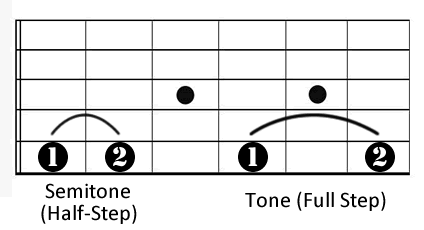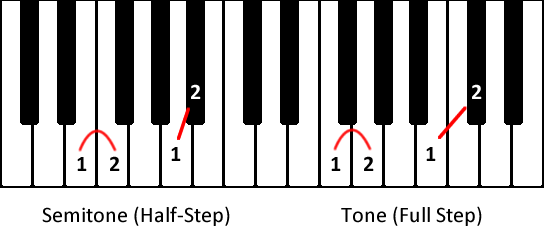Subject: Hey Friend, What Key is That Songy In The Window?
You are getting this e-mail because you subscribed to it on www.learn-to-play-rock-guitar.com. If you don't want to receive these e-mails any longer, go to the bottom of this message and click on "unsubscribe." Hey there Friend, Yup, a little play on words, taken from the 1953 #1 hit song "(How Much Is) That Doggie In The Window?", written by Bob Merrill and sung by Patti Page. I couldn't help letting a little bit of my quirky personality shine through this fine February day… (yeah, I can be a dork - just ask my wife and kids).So what the heck am I going to chat with you about today? Well, to follow up on a promise I made in the last email, let's talk about keys. No, not the keys you use to lock the house or car up with. Musical keys - after-all, this is a music related site. I introduced you a little to sharps and flats in the last series of email on fingerboard memorization. Now were going to get into more detail about how sharps and flats fit in to different keys and scales. First off, what is a key? A key is basically the starting note of either a major or minor scale. This note is often called the "tonic". You can start anywhere on the fingerboard - pick any note and play the major scale. Whatever note you start on is the tonic note for that scale. Every example I've given to this point has been in the key of C Major. Why? Because C Major has no sharp or flat notes in its scale. But as I just said, you can start anywhere on the fingerboard - G#, or Db, or Bb, it doesn't matter. It is much less intimidating to try and learn where the notes on the fingerboard are with 48 notes (without the sharps or flats) than it is with 72! When you play a major scale, there is a very specific pattern you use to determine what the next note is in the scale. We've briefly covered this in past articles, but let's look at it again. But first, the background details to remind you. The intervals (remember, an interval is just the distance between two notes) between each successive note in the major scale are either a "tone" or a "semitone", which can also be called a "step" or a "half-step", respectively. I make the distinction about 'successive notes' because an interval could be the distance between the tonic and its octave note). On a guitar or bass fingerboard, the interval of a tone is two frets. A semitone is one fret. On a piano, a tone would be three successive keys (black and white) on the keyboard and a semitone would be two successive keys. Guitar and Bass  Keyboard  OK, back to that specific pattern. Every key you can play in has a certain number of sharps or flats (except C Major, of course). When we play a major scale, the pattern of intervals we're going to use is:  If you play the intervals for the C major scale on one string of the guitar, say the B string, it would look like this:  Again, I've focused on the key of C major because there are only natural notes, no sharps or flats (accidentals). But what if we wanted to play the G major scale? We use the same pattern of  But the notes on the string don't line up as nicely as they did with C major:  You'll notice that when we get to the final 'tone' in the pattern, the note doesn't fall on F (10th fret), it falls on the 11th fret, which is F#. Then we finish out with the last semitone, from F# to G. Go ahead and play this scale - I'll wait...  So the G major scale happens to have one sharp note in it - the F# note. It doesn't matter where on the fingerboard you play the G major scale. It will always have the F# note in it as the seventh note in the scale. Here's some great news - in all the major scales, there is only one scale that has one sharp note in it - that's right, you guessed it - the G major scale. OK, the G major scale shows us the notes in the key of G. The key of G major has one sharp, the F# note. But how do you figure out the number of sharps (or flats) in every other key? You could memorize all the keys (and it's probably not a bad idea, although there are a lot of professional musicians out there that probably couldn't tell you the number of sharps in the key of F major off the top of their head). We have a handy tool that has been handed down over time by the Masters of the Music Universe - it's called the Circle of Fifths. It's a nice graphical representation showing each key and how many sharps or flats a key has. We'll look at this in an upcoming email. Why is all of this important. Truthfully, if you have no plans of ever being a pro/studio musician, knowing this information won't make you particularly popular at parties (unless maybe you whip out your guitar and play a little tune). But as you study guitar, there is usually some bleed into the music theory arena, and the more theory you learn, the better you'll be able to understand how and why a song was written like it was. Maybe you'll even put this information to work and write your own music. Let's stop here and pick up next time. Y'all have a great day, and keep rockin'! Peace~ Dave Dave "Eddie" Vance is a rock guitar enthusiast and gear nut. He has been playing guitar for over 30 years and enjoys tormenting the neighbors every chance he gets. When he's not slaving for the man, you can find him rocking out with his B.C. Rich Bich guitar, a cold beer and some sweet tunes. He also runs Learn-To-Play-Rock-Guitar.com, but you knew that already! Follow Learn To Play Rock Guitar:I welcome your feedback! Did you like today's message? What other topics would you like to see covered in my e-mails? Please let me know at: dave@learn-to-play-rock-guitar.com As always, please feel free to forward this email to a friend! I review products before recommending them. If you buy a product based on my recommendation, I will receive a commission. However, my emails also contain links that don’t require any investment on your part and are jam-packed with "juicy, guitar learnin' tastiness". We don't rent or share your name with anybody. Feel free to forward this issue to any friends you think would enjoy its contents. They will thank you. So will I.
|


